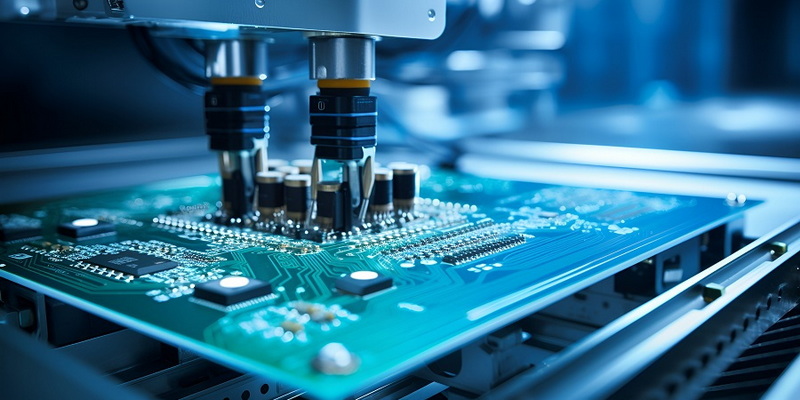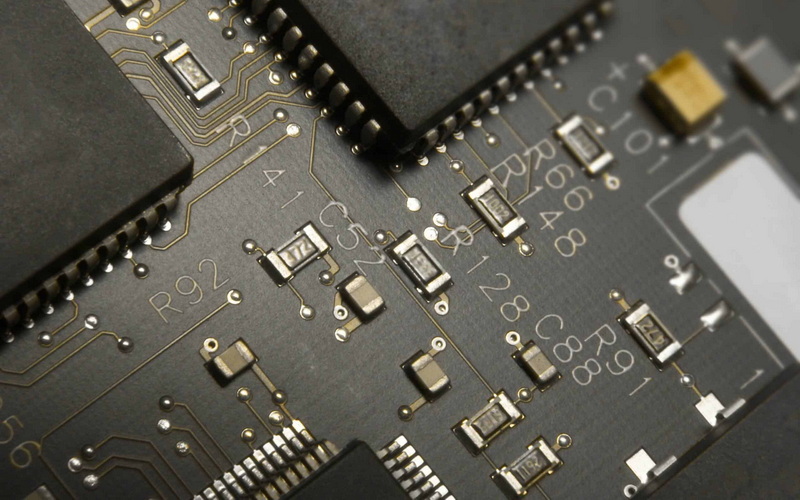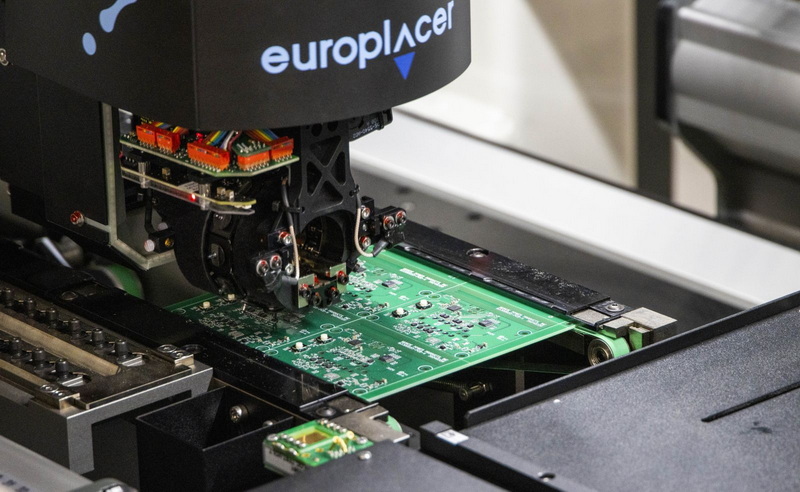Content Menu
● Understanding SMT and SMD Components
>> What is SMT?
>> Importance of Inspection in SMT
● Types of Defects Detected by SMT Line Inspection Machines
● Technologies Used in SMT Line Inspection Machines
>> 1. Automated Optical Inspection (AOI)
>> 2. X-ray Inspection
>> 3. In-Circuit Testing (ICT)
>> 4. Solder Paste Inspection (SPI)
>> 5. Functional Testing
● The Role of SMT Line Inspection Machines in Quality Control
>> Benefits of Using SMT Line Inspection Machines
● Challenges in SMT Line Inspection
>> 1. Complexity of Modern Assemblies
>> 2. False Positives and Negatives
>> 3. Integration with Manufacturing Processes
>> 4. Training and Expertise
● Future Trends in SMT Line Inspection
>> 1. Artificial Intelligence and Machine Learning
>> 2. Increased Automation
>> 3. Real-Time Monitoring and Analytics
>> 4. Enhanced Collaboration Between Machines
● Conclusion
● FAQ
>> 1. What is the primary function of an SMT line inspection machine?
>> 2. How does Automated Optical Inspection (AOI) work?
>> 3. What types of defects can X-ray inspection detect?
>> 4. Why is In-Circuit Testing (ICT) important?
>> 5. How does Solder Paste Inspection (SPI) contribute to quality control?
In the world of electronics manufacturing, the reliability and performance of surface mount devices (SMDs) are paramount. As the complexity of electronic assemblies increases, so does the need for effective inspection methods. This is where SMT line inspection machines come into play. These machines are designed to detect defects in SMD components, ensuring that only high-quality products reach the market. In this article, we will explore how SMT line inspection machines work, the types of defects they can detect, and the technologies involved in the inspection process.

Understanding SMT and SMD Components
What is SMT?
Surface Mount Technology (SMT) is a method used to mount electronic components directly onto the surface of printed circuit boards (PCBs). This technology has revolutionized the electronics industry by allowing for smaller, lighter, and more efficient devices. SMT components, or SMDs, are designed to be soldered onto the PCB without the need for through-holes, which simplifies the manufacturing process and reduces costs.
Importance of Inspection in SMT
The increasing miniaturization of electronic components has made inspection more critical than ever. Defects in SMD components can lead to failures in electronic devices, resulting in costly recalls and damage to a company's reputation. Therefore, implementing effective inspection processes is essential to ensure the quality and reliability of electronic assemblies.
Types of Defects Detected by SMT Line Inspection Machines
SMT line inspection machines are equipped to detect a variety of defects that can occur during the manufacturing process. Some common defects include:
1. Missing Components: Components that are supposed to be placed on the PCB but are absent.
2. Misalignment: Components that are not correctly aligned with their designated pads on the PCB.
3. Soldering Issues: Problems such as insufficient solder, solder bridges, or cold solder joints.
4. Component Damage: Physical damage to components that may occur during handling or assembly.
5. Incorrect Component Placement: Components that are placed in the wrong orientation or position.
Technologies Used in SMT Line Inspection Machines
1. Automated Optical Inspection (AOI)
Automated Optical Inspection (AOI) is one of the most widely used technologies in SMT line inspection. AOI machines use high-resolution cameras to capture images of the PCB and compare them against predefined templates. This allows for the detection of various defects, including missing components and misalignment. The speed and accuracy of AOI make it an essential tool in modern manufacturing lines.
2. X-ray Inspection
X-ray inspection is particularly useful for detecting defects in components that are not visible to the naked eye, such as Ball Grid Array (BGA) solder joints. X-ray machines can penetrate the PCB and provide detailed images of the internal structures, allowing operators to identify issues like voids or insufficient solder. This non-destructive testing method is crucial for ensuring the integrity of complex assemblies.
3. In-Circuit Testing (ICT)
In-Circuit Testing (ICT) is a method used to test the electrical performance of components on a PCB. This technique involves probing the circuit to measure parameters such as resistance, capacitance, and inductance. ICT can identify defects that affect the functionality of the circuit, such as short circuits or open circuits. By testing the components in their operational state, ICT provides valuable insights into the overall quality of the assembly.
4. Solder Paste Inspection (SPI)
Solder Paste Inspection (SPI) is performed before the components are placed on the PCB. SPI machines check the amount and placement of solder paste on the pads to ensure that there is enough solder for proper connections. This step is crucial for preventing soldering defects later in the process. By ensuring the correct application of solder paste, manufacturers can significantly reduce the likelihood of defects during soldering.
5. Functional Testing
Functional testing is the final step in the inspection process, where the assembled PCB is powered up to verify that it operates as intended. This testing phase checks the functionality of the entire circuit, ensuring that all components work together correctly. Any failures detected during functional testing can be traced back to specific components or assembly processes, allowing for targeted improvements.

The Role of SMT Line Inspection Machines in Quality Control
SMT line inspection machines play a vital role in the quality control process of electronics manufacturing. By detecting defects early in the production line, these machines help prevent faulty products from progressing to later stages of assembly. This not only saves time and resources but also enhances the overall quality of the final product.
Benefits of Using SMT Line Inspection Machines
- Increased Efficiency: Automated inspection processes reduce the time required for manual inspections, allowing for faster production rates.
- Improved Accuracy: Machines can detect defects with a higher degree of accuracy than human inspectors, minimizing the risk of oversight.
- Cost Savings: Early detection of defects can significantly reduce the costs associated with rework and product recalls.
- Enhanced Reliability: By ensuring that only defect-free products are shipped, companies can improve customer satisfaction and trust in their brand.
Challenges in SMT Line Inspection
While SMT line inspection machines offer numerous benefits, they also face several challenges:
1. Complexity of Modern Assemblies
As electronic devices become more complex, the inspection process must adapt to accommodate new technologies and component types. This requires continuous updates to inspection algorithms and machine capabilities.
2. False Positives and Negatives
One of the challenges in automated inspection is the potential for false positives (incorrectly identifying a defect) and false negatives (failing to detect a defect). Fine-tuning the inspection parameters is essential to minimize these occurrences and ensure reliable results.
3. Integration with Manufacturing Processes
Integrating SMT line inspection machines into existing manufacturing processes can be challenging. Companies must ensure that the inspection machines work seamlessly with other equipment and workflows to maintain efficiency.
4. Training and Expertise
Operators must be trained to use SMT line inspection machines effectively. This includes understanding how to interpret inspection results and make informed decisions based on the data provided.
Future Trends in SMT Line Inspection
The future of SMT line inspection is likely to be shaped by several trends:
1. Artificial Intelligence and Machine Learning
The integration of artificial intelligence (AI) and machine learning (ML) into SMT line inspection machines can enhance defect detection capabilities. These technologies can analyze vast amounts of data to identify patterns and improve inspection accuracy over time.
2. Increased Automation
As manufacturers strive for greater efficiency, the trend toward increased automation in inspection processes will continue. Fully automated inspection lines can reduce labor costs and improve consistency in quality control.
3. Real-Time Monitoring and Analytics
Real-time monitoring of inspection data can provide manufacturers with immediate feedback on production quality. This allows for quicker adjustments to processes and reduces the likelihood of defects reaching the final product.
4. Enhanced Collaboration Between Machines
Future SMT line inspection machines may feature improved communication capabilities, allowing them to share data and insights with other machines on the production line. This collaborative approach can lead to more efficient manufacturing processes and better overall quality.
Conclusion
In conclusion, SMT line inspection machines are essential tools in the electronics manufacturing industry. They provide a reliable means of detecting defects in SMD components, ensuring that only high-quality products reach consumers. By utilizing advanced technologies such as AOI, X-ray inspection, ICT, SPI, and functional testing, these machines enhance the efficiency and accuracy of the inspection process. As the demand for smaller and more complex electronic devices continues to grow, the importance of effective inspection methods will only increase. The future of SMT line inspection is bright, with advancements in AI, automation, and real-time analytics poised to revolutionize the industry.

FAQ
1. What is the primary function of an SMT line inspection machine?
The primary function of an SMT line inspection machine is to detect defects in surface mount devices (SMDs) during the manufacturing process, ensuring the quality and reliability of electronic assemblies.
2. How does Automated Optical Inspection (AOI) work?
AOI machines use high-resolution cameras to capture images of PCBs and compare them against predefined templates to identify defects such as missing components and misalignment.
3. What types of defects can X-ray inspection detect?
X-ray inspection can detect internal defects in components, such as voids in solder joints, insufficient solder, and issues with Ball Grid Array (BGA) connections.
4. Why is In-Circuit Testing (ICT) important?
ICT is important because it tests the electrical performance of components on a PCB, identifying defects that affect functionality, such as short circuits or open circuits.
5. How does Solder Paste Inspection (SPI) contribute to quality control?
SPI checks the amount and placement of solder paste on PCB pads before component placement, preventing soldering defects and ensuring proper connections.




















